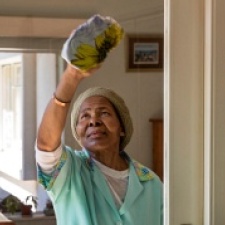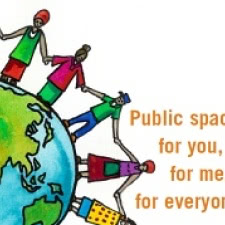Advanced Search
Search Results
550 results found
The impacts of the pandemic have exposed the large-scale vulnerabilities faced by workers in the informal economy, including the lack of adequate social protection coverage. Despite facing greater risks of falling into poverty than workers in the formal economy, informal workers are excluded from...
This Working Paper reflects the findings from the longitudinal study of nearly 2,000 informal workers in 11 cities around the world. Surveys and in-depth interviews were conducted with domestic workers, home-based workers, street vendors and market traders, and waste pickers in mid-2020 and then...
Waste pickers at the Mbeubeuss dumpsite have set up their own cooperative in an effort to be integrated into the new waste management model put forward by the government.
Principais Achados: As cooperativas foram rápidas na implementação dos protocolos COVID-19 nos seus galpões, conseguindo assim maior credibilidade junto aos gestores públicos e maior segurança para seus membros. O mapeamento mostrou um aumento significativo no número de casos suspeitos e casos...
• As cooperativas de catadores funcionaram como um colchão amortecedor para os catadores do Brasil (termo pelo qual são conhecidos no país) contra os piores impactos econômicos da pandemia, uma vez que muitos deles tiveram acesso a apoio, inclusive por meio do sistema EPR do país, conhecido como...
See related brief . Key Points: Cooperatives were able to quickly implement COVID-19 protocols in the sorting sheds, thus achieving greater credibility with public officers and greater security for cooperative members. The survey showed a significant increase in the number of suspected as well as...
Key Points Waste-picker cooperatives cushioned Brazil’s waste pickers (known locally as catadores ) against the worst economic impacts of the pandemic because many had access to support, including through the country’s EPR system known as the reverse logistics systems. All surveyed cooperatives...
This study looks at all the ways in which home aids work — spatially and infrastructurally — and illustrates the role of various factors and actors in engaging with and shaping the work-home boundary.
This study looks at all the ways in which home aids work — spatially and infrastructurally — and illustrates the role of various factors and actors in engaging with and shaping the work-home boundary.
This brief is a part of WIEGO's documentation of Mahila Housing SEWA Trust’s (MHT) work to capture insights on their work that has had wide ranging impacts on the wellbeing and economic productivity of home-based workers. It presents a three-pronged strategic framework to organize insights from MHT...
Videos / Slideshows / Audio
Millions of women work long hours, in dangerous conditions, for little pay. They are fighting for change, with the help of ILO Convention 189 on Decent Work for Domestic Workers. Watch this video to learn how.
Workers Education/Organizing Materials
This manual helps street vendors learn more about the regulations that govern public space and how to defend the right to work in public space. It describes successful actions taken by street vendor organizations. And it offers information to help you organize and negotiate with local government.
WIEGO Working Papers
Mike Rogan reviews how informal workers are taxed, why there is growing interest in taxing them, and whether they should be included in the tax net.



